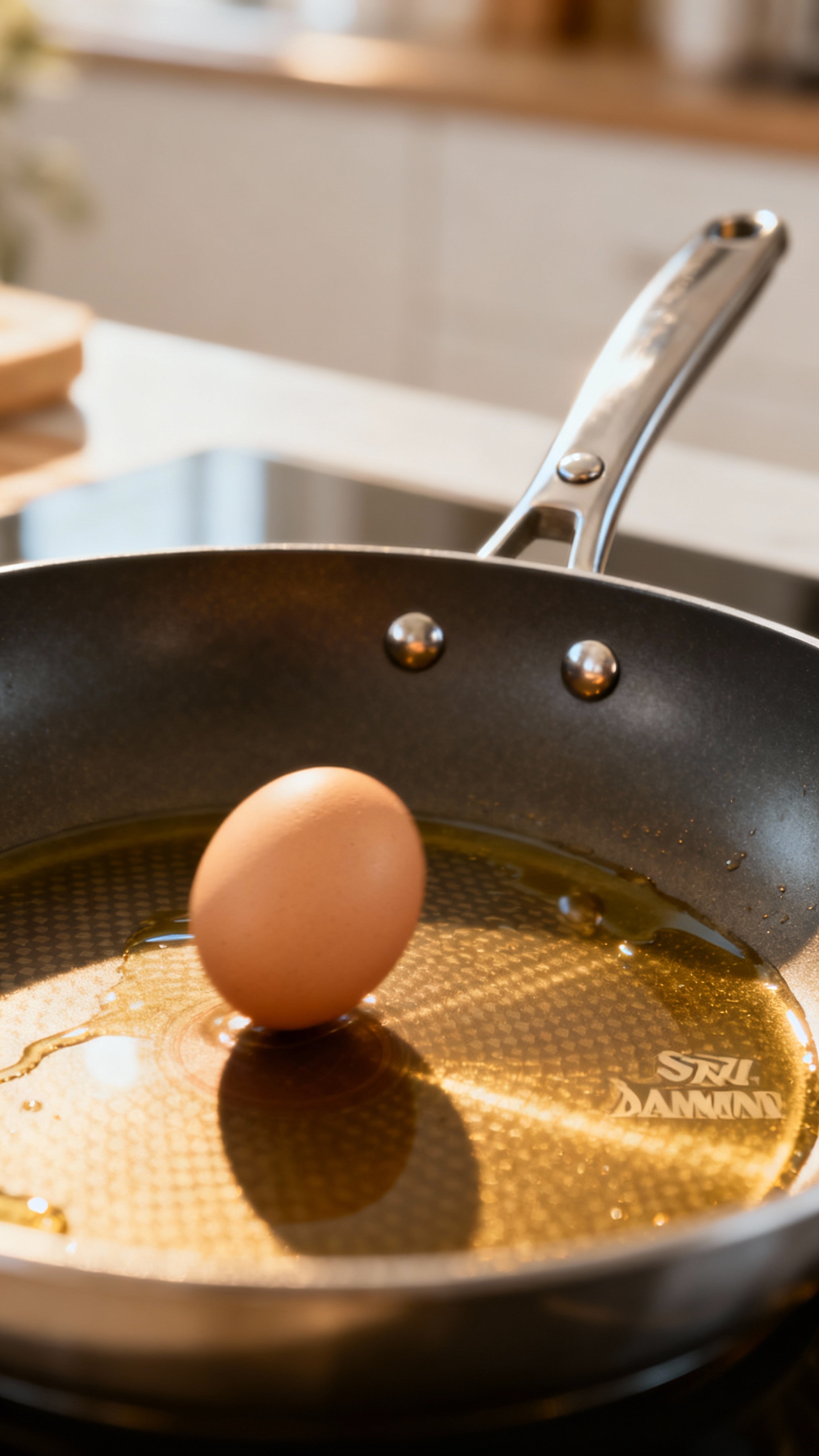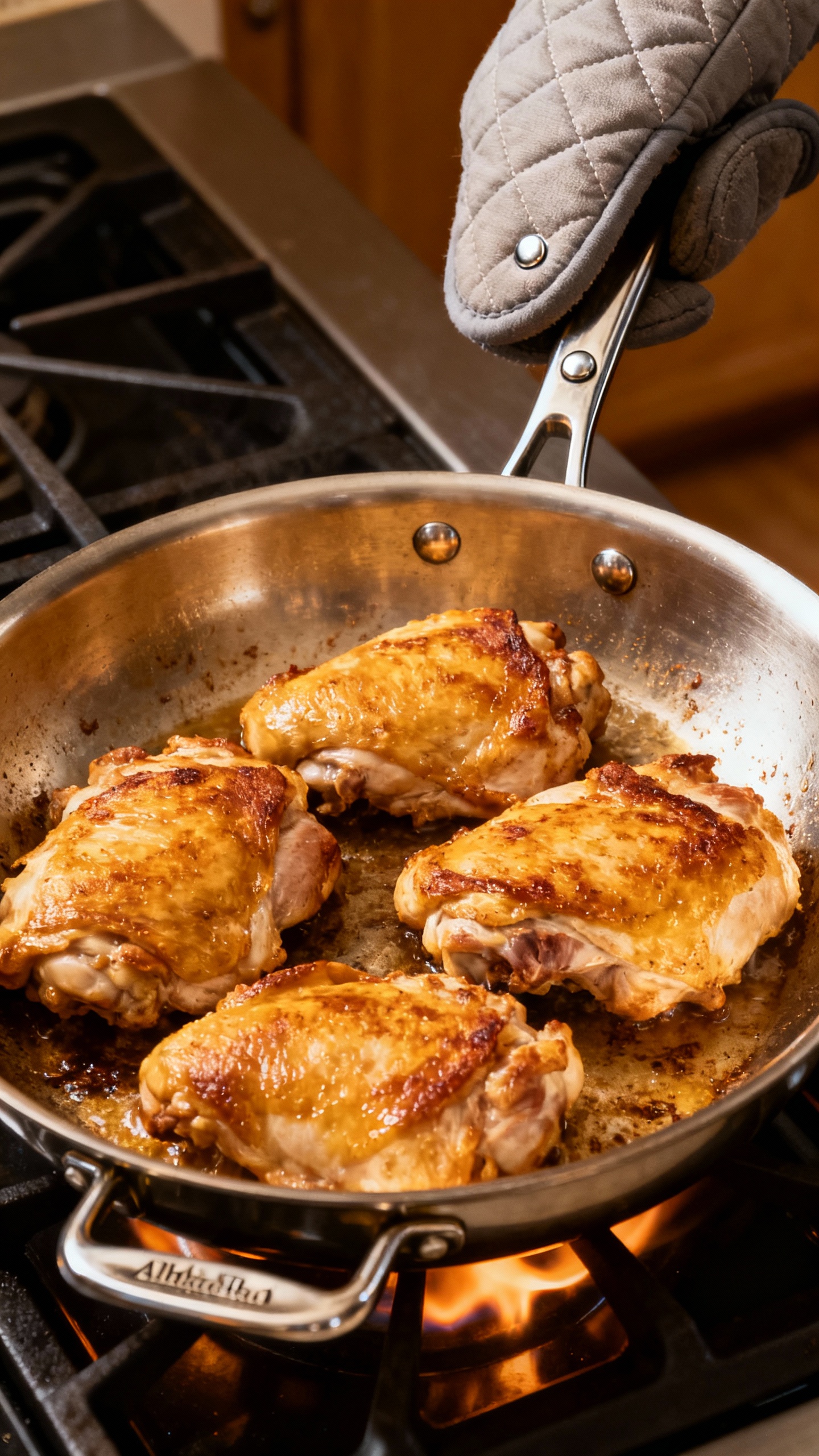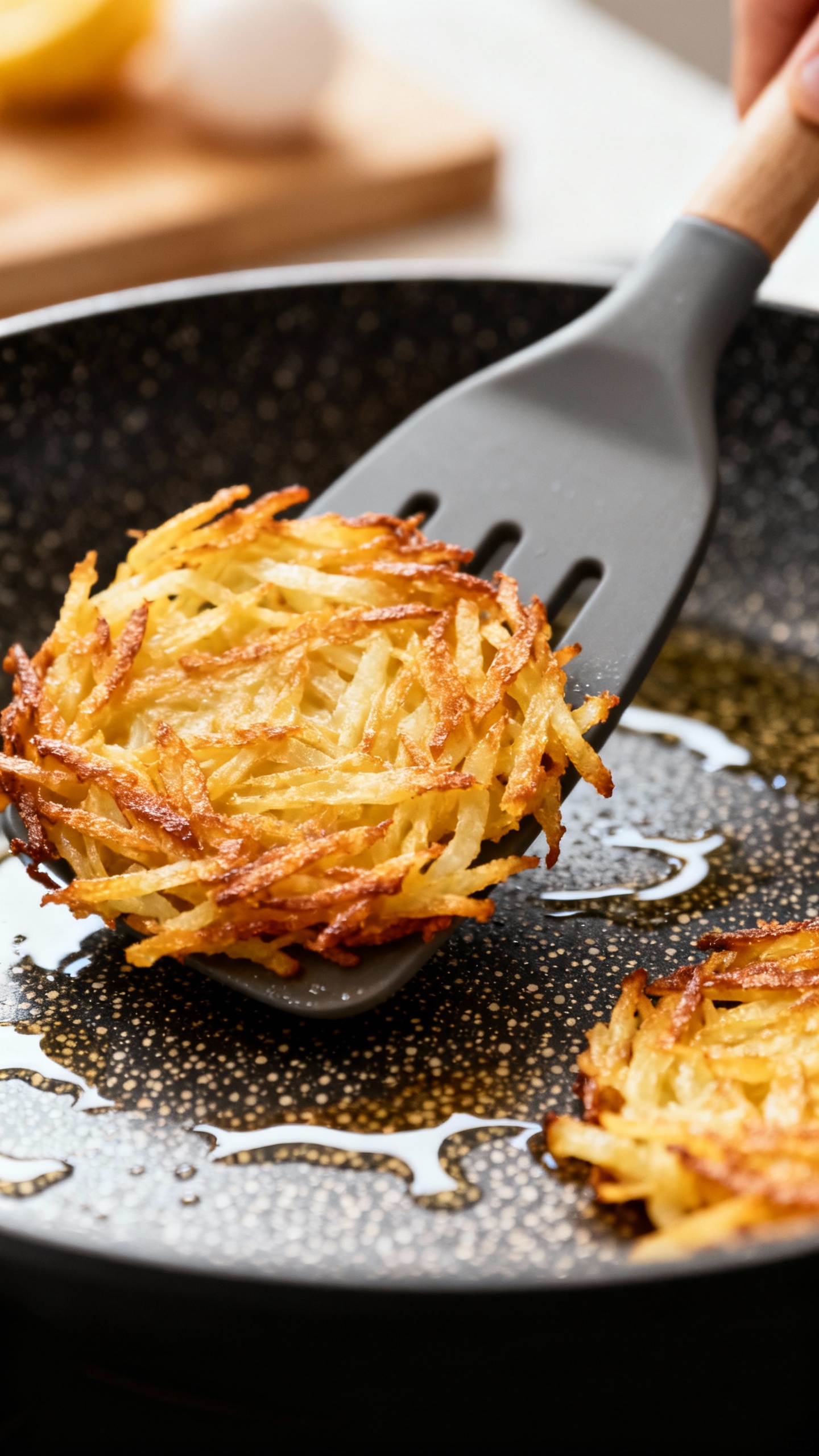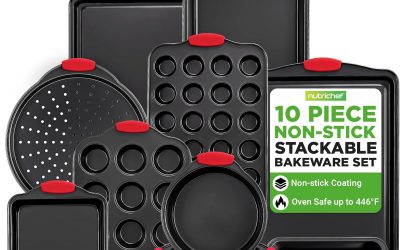Nonstick pans promise eggs that slide like figure skaters and weeknight cleanup that doesn’t crush your soul. Then a year later, you’re scraping sad omelets with a wooden spoon and wondering where it all went wrong. Good news: a few nonstick pans actually hold up.
The trick? Pick the right build, treat it right, and don’t fall for cheap coatings that ghost you after six months.
What Makes a Nonstick Pan Actually Last

You don’t need to be a materials engineer to pick a durable pan, but a little nerdy context helps. The longest-lasting nonstick pans usually have three things:
- Hard-anodized aluminum or forged/clad bases for stability and even heat.
- Multi-layer coatings with reinforced particles (ceramic, diamond, titanium, or “plasma” treatments).
- Riveted stainless handles and oven-safe builds so you can finish dishes without fear.
FYI: No nonstick coating loves screaming-high heat.
Keep it to medium or medium-high and you’ll double the lifespan. IMO, the right pan plus sane heat equals two to three years of smooth sailing.
7 Nonstick Pans That Actually Go the Distance
These picks cover different prices, materials, and vibes. All of them can stay slick for 18–36 months with reasonable care.
No unicorn promises—just solid gear that won’t quit after one birthday.
1) Swiss Diamond Classic Fry Pan
Swiss-made, diamond-reinforced, and legitimately tough. The coating feels dense and glassy, which helps resist scratching and pitting.
- Why it lasts: Real diamond crystals in the matrix add hardness and heat conductivity.
- Best for: Daily eggs, delicate fish, and pan sauces.
- Care tip: Preheat 1–2 minutes on medium; avoid aerosol sprays—they gum up the surface.
2) All-Clad HA1 Hard Anodized Nonstick
If you want a workhorse that stays flat and heats evenly, this one slaps. The triple-layer PFOA-free coating sits on a heavy, hard-anodized body with a stainless base.
- Why it lasts: Thick base resists warping; the coating feels tighter and less prone to micro-scratches.
- Best for: Searing chicken thighs, then finishing in the oven.
- Care tip: Metal utensils technically “safe,” but don’t.Use silicone and you’ll easily hit the two-year mark.
3) Anolon Advanced Home
Anolon keeps things cost-friendly without skimping on build. The surface releases like a dream, and the pan feels sturdy but not heavy.
- Why it lasts: Hard-anodized body plus a reinforced nonstick that handles daily cooking.
- Best for: Family meals, stir-fries, and pancakes that don’t cling.
- Care tip: Hand-wash. The dishwasher won’t kill it, but it will shave months off the coating.
4) Zwilling Motion by Ballarini
Sleek, fast-heating, and surprisingly durable for the price.
Ballarini knows coatings, and this one holds up under real-world use.
- Why it lasts: Multi-layer ceramic-reinforced coating with a thick, stable base.
- Best for: Golden-brown hash browns and crispy tofu that flips easy.
- Care tip: Give it a teaspoon of oil now and then—it “seasons” the surface lightly and keeps food sliding.
5) GreenPan Valencia Pro (Ceramic Nonstick)
Ceramic nonstick usually flames out early, but Valencia Pro is the exception that makes everyone argue in the comments. It’s induction-ready and oven-safe to 600°F.
- Why it lasts: Thermolon ceramic coating reinforced with diamonds, plus a Magneto induction base that resists warping.
- Best for: Tomato sauces, acidic dishes, and high-heat oven finishes.
- Care tip: Avoid dry, empty preheats on max heat—ceramic still prefers moderation.
6) Made In Non Stick Frying Pan
Pros love Made In’s stainless and carbon steel, but their nonstick belongs in that chat too. It’s PTFE-based with a stainless-clad body that feels premium.
- Why it lasts: 5-ply build spreads heat evenly, so you don’t scorch one spot and wear down the coating.
- Best for: Weeknight proteins and eggs that glide right out.
- Care tip: Heat the pan first, then add a touch of fat—classic technique that keeps coatings happier, longer.
7) Scanpan CS+ (or CTX) Stratanium+
Scanpan’s Stratanium+ coating feels almost textured, which helps browning while staying slick.
The build screams “buy once, cry once.”
- Why it lasts: Ceramic-titanium particles fused to the surface; the coating doesn’t feel like a thin paint layer.
- Best for: Smash burgers, scallops, and anything that needs both color and release.
- Care tip: It tolerates metal, but use silicone if you want multi-year longevity.

How To Keep Nonstick Non-Stick (AKA: Don’t Sabotage It)
Want two to three years out of any good pan? Treat it right. None of this is hard, and it saves money and annoyance.
- Use medium heat: Nonstick hates burners cranked to 11.Medium gets the job done without scorching the coating.
- No aerosol sprays: They leave a sticky film that builds up. Use a little oil or butter instead.
- Preheat briefly, then add fat and food: This keeps proteins from latching on and evens out browning.
- Hand-wash with a soft sponge: Skip the dishwasher and abrasive pads. Two minutes, done.
- Store smart: Don’t stack pans raw.Use pan protectors or a towel between them.
When To Replace
If eggs start sticking despite sensible heat and a little oil, or you see deep scratches and dull, patchy spots, the coating likely packed it in. You can keep it for grilled cheese and quesadillas, but retire it for delicate foods.
Nonstick vs. Other Pans: Where Each Shines
You don’t need a whole cupboard of nonstick—just one or two good ones.
Pair them with other workhorses and you’re set.
- Cast iron: Best for serious sear, oven roasting, and durability. Heavy, needs maintenance.
- Stainless-clad: Great for browning and pan sauces, invincible if you don’t shock it with heat changes.
- Nonstick: Eggs, fish, pancakes, sticky sauces, reheating—basically anything you don’t want to scrape.
Think of nonstick like a sharp knife: treat it right, and it does magic. Abuse it, and it gets dull fast.
IMO, two solid nonstick skillets (8–10 inch and 12 inch) cover 95% of everyday needs.

Buying Tips That Actually Matter
Before you click “Buy Now,” sanity-check the details:
- Thickness: Heavier pans resist warping and hot spots.
- Coating tech: Look for multi-layer, reinforced surfaces (diamond, titanium, ceramic-titanium). Single-layer bargain coatings fade quick.
- Handle comfort: If it digs into your hand empty, you’ll hate it when it’s full.
- Oven safety: 400–600°F ratings give you versatility for finishing dishes.
- Induction compatibility: If you have induction, make sure the base is magnetic.
Budget vs. Premium
A $35 pan might work for six months.
A $70–$150 pan with a reinforced coating can last two years or more. Premium doesn’t mean “forever,” but it often buys better heat control and slower wear.
FAQ
Do I need to “season” a nonstick pan?
Not like cast iron. But adding a teaspoon of oil after preheating creates a micro-layer that improves release and protects the surface.
It’s not mandatory, just helpful.
Is ceramic nonstick better than PTFE?
They trade wins. Ceramic handles higher peak temps and feels more “inert,” but many ceramic coatings lose slickness faster. High-quality PTFE often stays nonstick longer at moderate heat.
Pick based on your habits.
Can I use metal utensils?
Manufacturers love to say yes. If you want the pan to last more than a year, use silicone or wood. Metal leaves micro-scratches that add up over time.
Why do my nonstick pans warp?
Thin bases and thermal shock.
Blasting high heat on an empty pan or running a hot pan under cold water twists it. Choose thicker, hard-anodized or clad builds and let pans cool before washing.
Are nonstick coatings safe?
Modern nonstick pans are PFOA-free. PTFE is stable at normal cooking temps.
The real risk is overheating to silly temps that generate fumes—just don’t cook on max heat empty and you’re fine.
How long should a good nonstick pan last?
With proper care and moderate heat, expect 18–36 months of great performance. After that, they still work—just not for super delicate foods.
The Bottom Line
You don’t need a dozen pans—just one or two that won’t wimp out after a year. Pick a reinforced coating on a sturdy base (think Swiss Diamond, All-Clad HA1, Anolon, Zwilling Motion, GreenPan Valencia Pro, Made In, or Scanpan), keep the heat reasonable, and skip the aerosol spray.
Do that, and your eggs will glide, your fish won’t flake apart, and your pan will still feel like a treat long after the warranty card disappears.




0 Comments